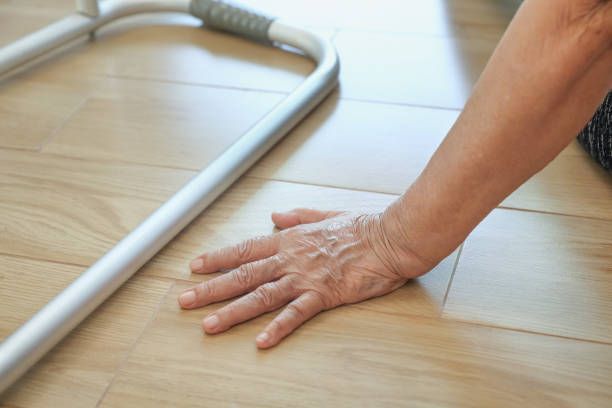Seniors
Want to learn more about this at Kettering Health?
In recent years, raising awareness for fall prevention has become all the more important.
“We’re seeing a national rise in falls among the geriatric population,” says Melissa Whitmill, MD, trauma medical director at Kettering Health Main Campus.
Falls are the leading cause of fatal and nonfatal injuries in Americans 65 years and older. In fact, nearly one-quarter of Americans 65 years old and older fall each year, leading to 2.5 million nonfatal falls being treated in emergency rooms.
But falls need not be the norm. “It is important to remember that falling is not a part of getting older,” says Dr. Whitmill.
Why is falling so common?
By age 65, most people lose 25% of their muscle mass, diminishing their mobility and balance. Other risks that compound a person’s chances for falling include vision issues, conditions such as Parkinson’s, and dehydration. “Our thirst mechanism declines as we age,” says Dr. Whitmill, “meaning we might not feel thirsty though we need fluids.” This can lead to dizzy spells when you stand.
While aging may add certain risks, as Dr. Whitmill strongly reminds folks that that doesn’t mean falling needs to be an accepted part of aging.
How can you avoid falls?
Most falls occur at home due to slips and trips. So, the first place to limit the risks of falling is the home. Dr. Whitmill recommends the following:
- Remove throw rugs and secure loose carpet.
- Keep pathways clear of electrical cords and clutter.
- Use handrails on both sides of stairwells and make sure the stairwell is well-lit.
- Use nightlights between the bed and the bathroom and keep this path clear of clutter.
- Have grab bars installed in the shower/tub area and use non-slip bath mats.
- Adjust the toilet height so it’s easy to sit and stand.
She adds that staying active is important, though it can be intimidating. The issue is that a fear of falling can discourage someone from getting out and staying active. “This starts an unfortunate cycle,” says Dr. Whitmill, “because now they are losing muscle mass and flexibility, which increases their chance to fall.”
Have a conversation
Many people, particularly adult children of older parents, may not consider fall risks and prevention a necessary conversation to have. But it’s important that they do.
“Only about half of older-adult falls are reported,” says Dr. Whitmill. “Usually, the non-injury falls are the one that aren’t reported.” The main deterrent that keeps older people from sharing about a fall is fear that they’ll lose their independence.
The best time to have a conversation about fall prevention is before a fall happens. Unfortunately, though, the injuries sustained from some first falls make it difficult for someone to remain independent in their home. Having these conversations early is key to keeping older Americans safe and independent in their homes as long as possible.
Find help, keep your independence
At Kettering Health’s NeuroRehab and Balance Center, you can reduce your risk of falling by improving your balance with the help of physical and occupational therapists who specialize in balance and fall prevention.










